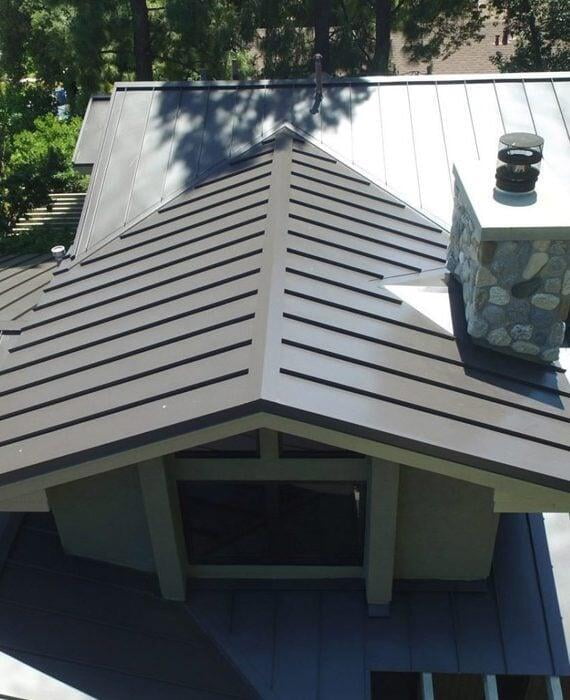Historic and aging buildings carry significant cultural, architectural, and historical value. Preserving these structures requires specialized knowledge and expertise in building restoration. In this informative blog, we will explore the importance of building restoration services, the types of services offered, and how they contribute to the conservation and revitalization of our architectural heritage.
The Significance of Building Restoration
The Significance of Building Restoration
The Significance of Building Restoration
Preserving Cultural Heritage: Historic buildings reflect our cultural identity and provide a tangible link to our past. Building restoration services play a crucial role in safeguarding these structures, ensuring that future generations can appreciate their beauty, architectural significance, and the stories they hold.
Conservation of Architectural Styles: Restoration services focus on maintaining the authenticity of architectural styles and design elements specific to a particular era or region. This attention to detail ensures that the building retains its original character while addressing structural issues and functional requirements.
Enhancing Aesthetics and Value: Restoring a building can breathe new life into its appearance, reviving its original charm and elegance. A restored building not only adds to the aesthetic appeal of a neighbourhood or city but can also increase property values and attract businesses, tourism, and community engagement.
Types of Building Restoration Services
Types of Building Restoration Services
Types of Building Restoration Services
1. Structural Repairs: Building restoration professionals conduct a thorough assessment of the structural integrity of a building. They identify and address issues such as foundation problems, deteriorating walls, damaged roofs, or compromised support systems. Reinforcement and repair techniques are employed to ensure the building's stability and longevity.
2. Façade Restoration: The exterior façade of a building is often the most visible and vulnerable to weathering and deterioration. Restoration services involve cleaning, repairing, and preserving the façade materials, such as brick, stone, stucco, or ornamental features. This process may include repointing, patching, waterproofing, and applying protective coatings.
3. Window and Door Restoration: Historic windows and doors contribute significantly to a building's character and architectural style. Restoration specialists repair or replicate existing windows and doors, addressing issues like rot, decay, or damage while maintaining the original design. This process often involves using traditional craftsmanship techniques to retain historical authenticity.
The Process and Benefits of Building Restoration
The Process and Benefits of Building Restoration
Thorough Assessment:
Building restoration services begin with a comprehensive assessment of the building's condition. This evaluation identifies existing problems, potential risks, and necessary restoration measures. It helps in developing a customized restoration plan and estimating the associated costs.
Preservation and Sustainability:
Building restoration professionals prioritize sustainable practices and materials, aiming to minimize environmental impact. They employ techniques that extend the lifespan of the restored building, reducing the need for frequent repairs or replacements.
The Essential Guide to Waterproofing Your Shower: Preventing Water Damage and Ensuring Longevity
The Essential Guide to Waterproofing Your Shower: Preventing Water Damage and Ensuring Longevity
Water damage is a common issue in bathrooms, particularly in showers where constant exposure to moisture occurs. Waterproofing your shower is essential to prevent costly repairs, mold growth, and structural damage. Explore the importance of waterproofing a shower steps and some valuable tips to ensure a watertight shower that stands the test of time.
The Importance of Shower Waterproofing
The Importance of Shower Waterproofing
1. Preventing Water Damage: Water can seep through cracks, gaps, and improperly sealed areas in your shower, leading to damage to walls, floors, and nearby structures. Waterproofing acts as a protective barrier, preventing water from penetrating and causing costly repairs and mold growth.
2. Preserving Structural Integrity: Water damage can compromise the structural integrity of your shower enclosure, causing rotting, warping, and weakening of the underlying materials. Proper waterproofing ensures that the structural components, such as the subfloor, walls, and joints, remain intact and durable.
3. Mold and Mildew Prevention: Excessive moisture in your shower can create an ideal environment for mold and mildew growth. Not only do these microorganisms damage surfaces, but they can also pose health risks. Waterproofing measures help minimize moisture accumulation and inhibit mold and mildew growth, promoting a healthy and hygienic shower environment.
Steps to Waterproof Your Shower
Steps to Waterproof Your Shower
1. Surface Preparation: Start by removing the existing shower materials, such as tiles, grout, and caulking. Ensure the surface is clean, dry, and free from debris. Repair any cracks, holes, or damaged areas before proceeding with waterproofing.
2. Waterproofing Membrane Installation: Apply a waterproofing membrane to the shower walls, floor, and any areas prone to water exposure. There are different types of membranes available, including sheet membranes, liquid membranes, and peel-and-stick membranes. Follow the manufacturer's instructions and ensure complete coverage to create a watertight seal.
3. Sealant Application: Apply a high-quality silicone-based sealant to all joints, corners, and gaps in the shower enclosure. This includes seams between the shower walls and floor, corners where walls meet, and around fixtures and drains. Use a caulking gun for precise application and ensure a smooth, even seal.
4. Reinstalling Surface Materials: Once the waterproofing membrane and sealant have cured according to the manufacturer's instructions, you can reinstall the shower surface materials. This includes tiles, grout, and any decorative elements. Ensure proper waterproofing practices are followed during the reinstallation process.
Tips for Effective Shower Waterproofing
Tips for Effective Shower Waterproofing
1. Hire a Professional: While it is possible to undertake shower waterproofing as a DIY project, hiring a professional waterproofing contractor ensures proper installation and adherence to industry standards. Professionals have the knowledge, experience, and access to high-quality materials for effective waterproofing.
2. Use Quality Materials: Invest in high-quality waterproofing membranes, sealants, and adhesives. These materials provide better durability, flexibility, and resistance to water penetration.
3. Maintain Proper Drainage: Ensure that your shower has a properly functioning drainage system that directs water away efficiently. A well-designed drainage system prevents water from pooling in the shower area, reducing the risk of leaks and water damage.
4. Regular Maintenance: Periodically inspect your shower for signs of water damage, such as cracked tiles, peeling sealant, or discoloration. Address any issues promptly to prevent further damage and maintain the integrity of your waterproofing.
Conclusion
Conclusion
Properly waterproofing shower is crucial for preventing water damage, preserving structural integrity, and maintaining a healthy environment. By following the necessary steps and utilizing quality materials, you can ensure a watertight shower that withstands the test of time. Consider professional assistance for a hassle-free and effective waterproofing solution that provides long-term peace of mind.


